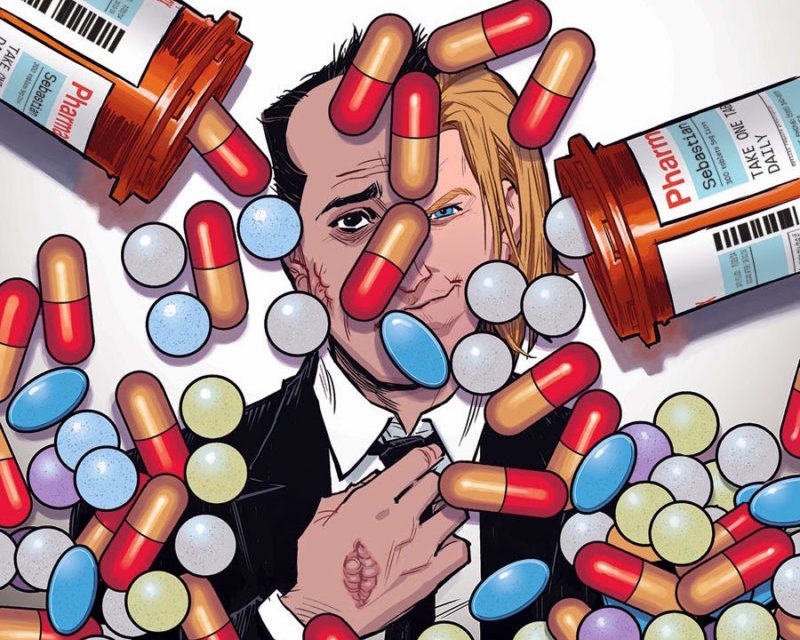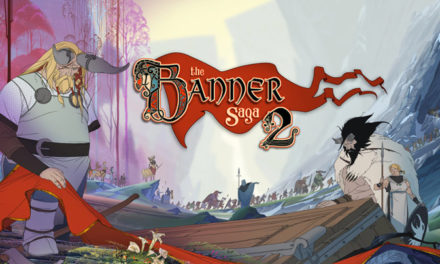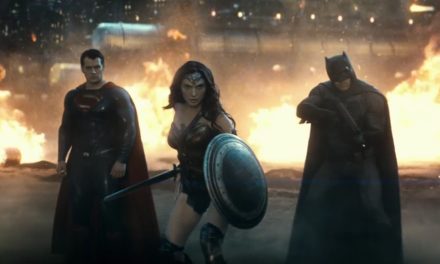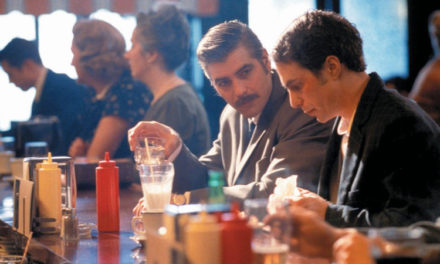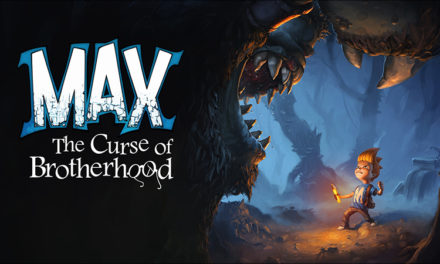In 1996 Chuck Palahniuk publishes his book Fight Club. Three years later in 1999, David Fincher and 20th Century Fox release the movie adaptation of Fight Club that is beloved by just about everyone. Then comes 2015, in the middle of the great nostalgia and sequel renaissance, and Chuck Palahniuk releases Fight Club 2 a comic book sequel to his novel, and it is fantastic.
Fight Club 2 picks up 10 years after the events of the first Fight Club. The narrator (now revealed to be named Sebastian; not Jack) and Marla Singer are now married with their own young boy. Sebastian is on medication to keep his alter ego, Tyler Durden, at bay. But, Marla is bored with life and misses the excitement that Tyler brought her. She decides to replace Sebastian’s medication with placebo pills so that while Sebastian is asleep, Tyler can come out to play. What at first seems like a good deal to Marla quickly turns sour when Tyler tries to murder Sebastian and Marla in their sleep and kidnap their son. Tyler resumes his world domination attempts as he reclaims his spot as head of Project Mayhem.
Palahniuk claimed that the comic book medium was the only way to write Fight club 2, and he was right.When Fight Club 2 was first announced Palahniuk claimed that the comic book medium was the only way to write Fight club 2, and he was right. Fight Club 2 is essentially a cat and mouse story. What unfolds is an intertwining narrative about a husband and wife both trying to get their son back from a sadistic alternate personality. Without the visual representations of Sebastian and Tyler, the story could easily get very confusing to any reader. On one page we see Sebastian making his way to the headquarters of Project Mayhem, and on the next page we see Tyler making the final approach. Through this visual representation we are able to see whose mind is dominating the same body. Even now, I can’t help but to feel that this explanation of it pales in comparison to actually experiencing it spread out in comic book form. Because of this, Palahniuk is able to give us something we never got to see in the original novel or in the movie, and that is seeing Tyler interact with other characters as Sebastian. In this case he is interacting with Sebastian’s son, while Sebastian’s son see’s Tyler as his father.
There are times throughout the narrative that Sebastian and Tyler speak to each to each other. Instead of putting two people into a room together like it was portrayed in the novel or the movie, the two now communicate to each other in a shared dream space whenever either of them sleep. We come to realize that Tyler may or may not have always been part of Sebastian. Not only does this give us some background information on the two as characters and their history together, but it eliminates the confusion the reader might get if they were to see the two characters standing side by side with another group of people. Palahniuk is smart, we already saw Sebastian and Tyler standing standing side by side in the novel and in the movie. Now that we all know the twist, Palahniuk can focus on other things. Palahniuk still includes his fair share of twists and turns in Fight Club 2 and while at first they seem cheap, the payoff on the very last page makes them all worth it.

Choosing Cameron Stewart to do the art for Fight Club 2 was perfect. While I am not familiar with his previous work, I now know that I need to seek it out. His unique style lends itself to the story. Stewart creates an almost multi-sensory experience with the art in this series. In the very first issue, theres a series of panels where Sebastian takes his medication and we see how his day progresses while he is on that medication. Stewart mutes the colors of the panel which show how colorless and bland Sebastian’s day is. He then goes above and beyond by adding “3D” pills that seem to be randomly strewn across the page. These pills block out portions of text that only give the reader half of the information. Stewart simulates the feeling of being in a fog so that we feel what Sebastian feels. We know what Sebastian knows. Stewart utilizes the same technique throughout all of the issues to simulate various feelings. At one point, the sounds of animals obscures the speech bubbles from the main characters, just like being in a noisy room and being unable to hear the person next to you. Its frustrating at first until you either get used to it or realize how brilliant a technique it is.
Whether you’ve read the book or have only seen the movie, I would consider Fight Club 2 to be essential reading. During an age when everything is either a sequel or a reboot aimed at making money through nostalgia, Fight Club 2 succeeds in continuing a story that doesn’t feel forced or unnecessary. I did not realize how much I wanted Fight Club 2 until I picked up the first issue out of curiosity. The only thing it leaves you with is immense satisfaction. I can’t wait to see what else Cameron Stewart brings us with his work, and I hope this isn’t Palahniuk’s last time writing in the comic book medium.
Fight Club 2 is currently available in single issues and will be released as a collected graphic novel on June 28.

